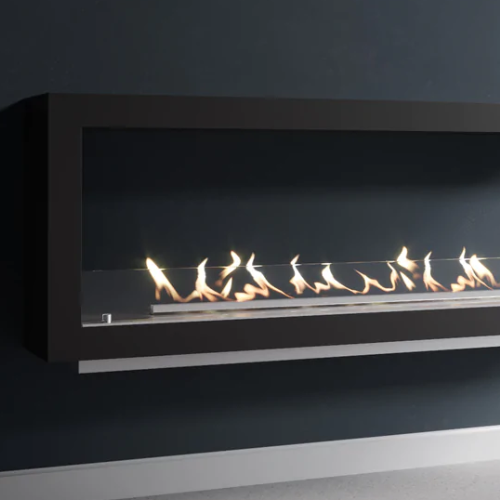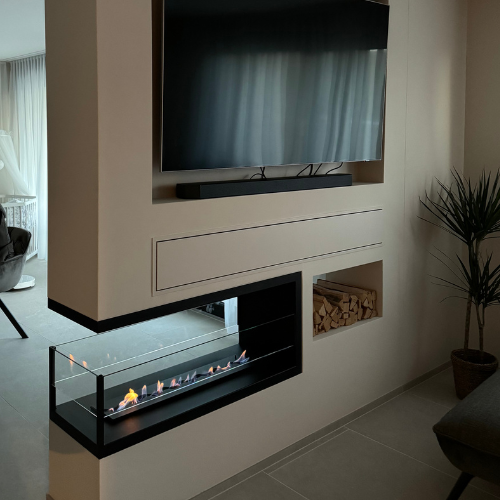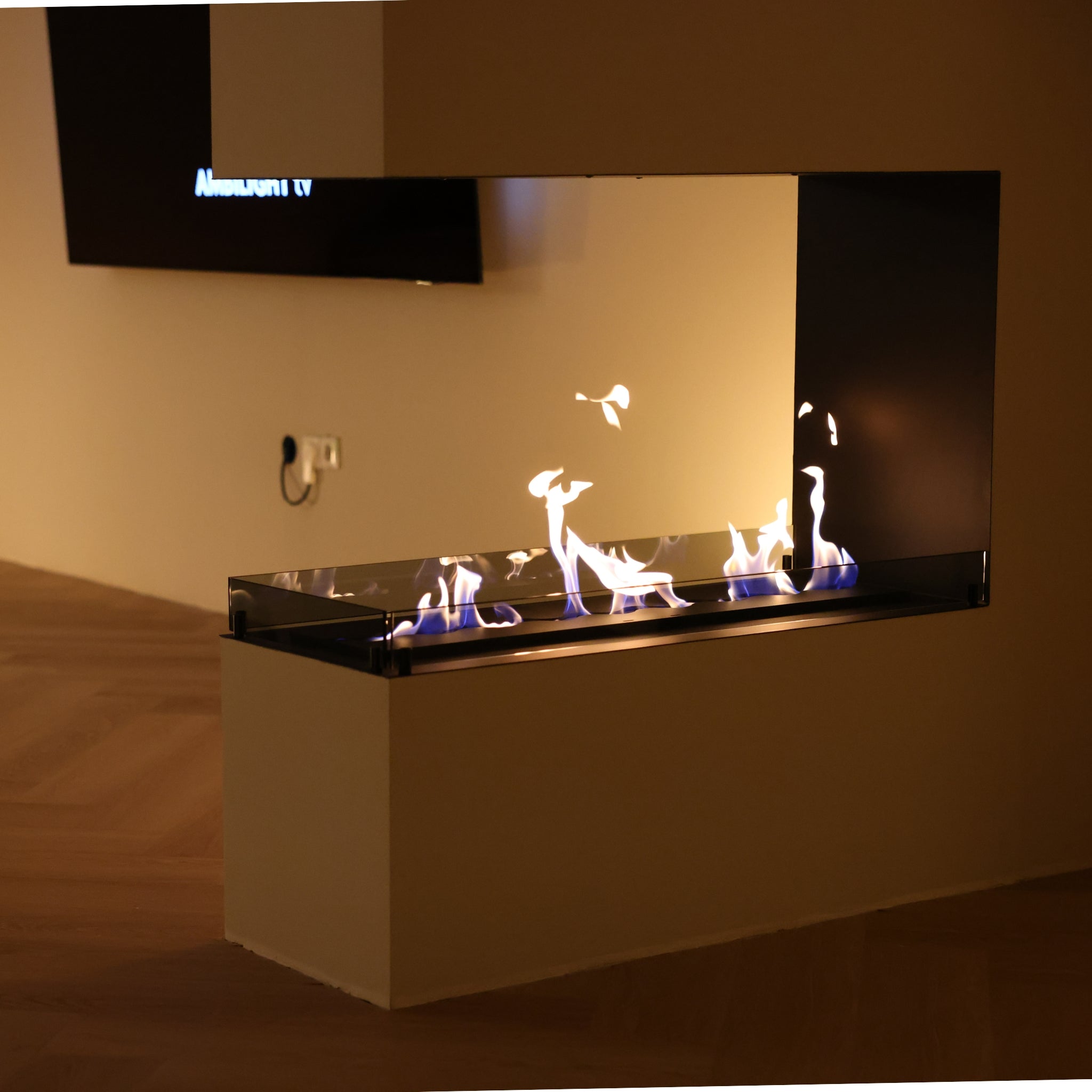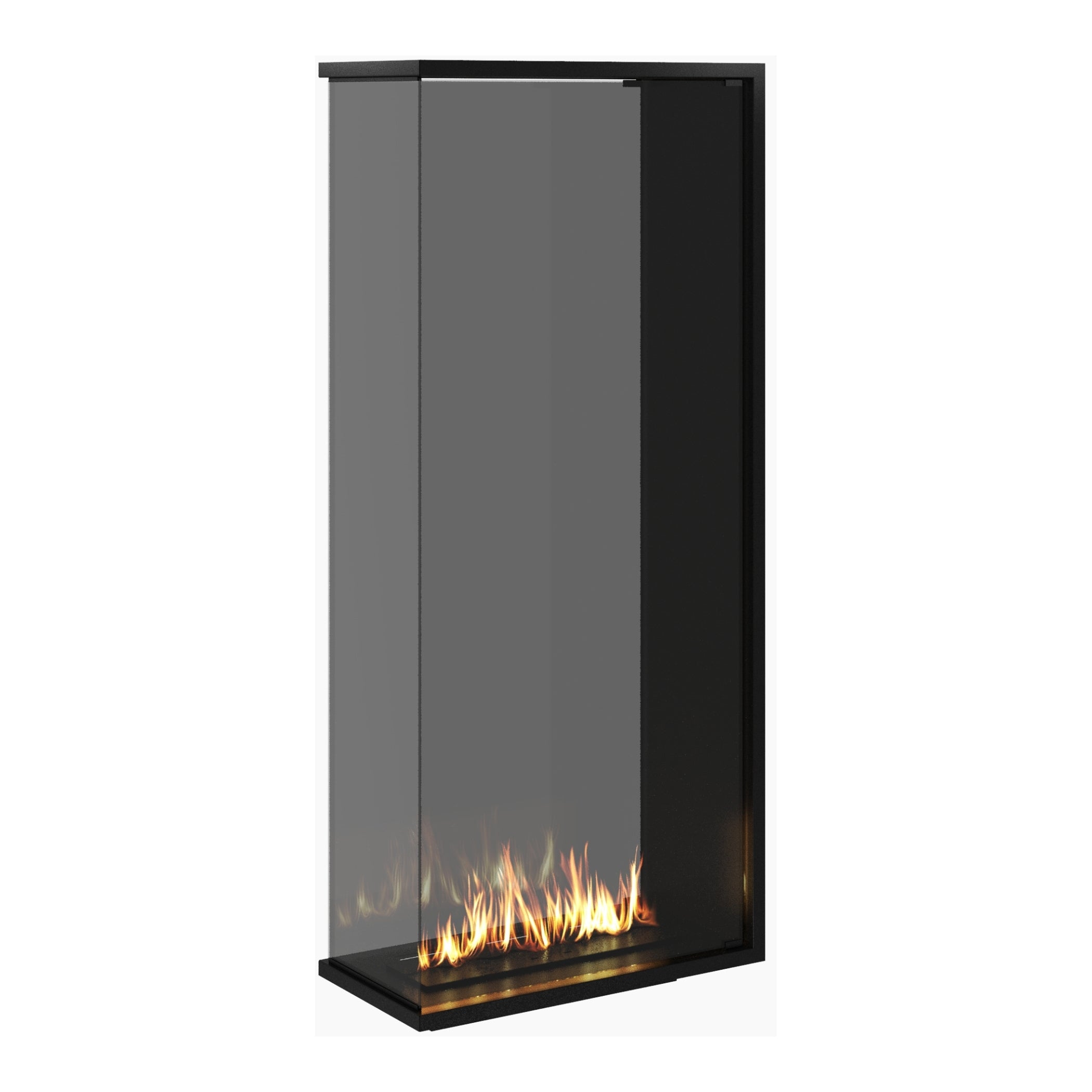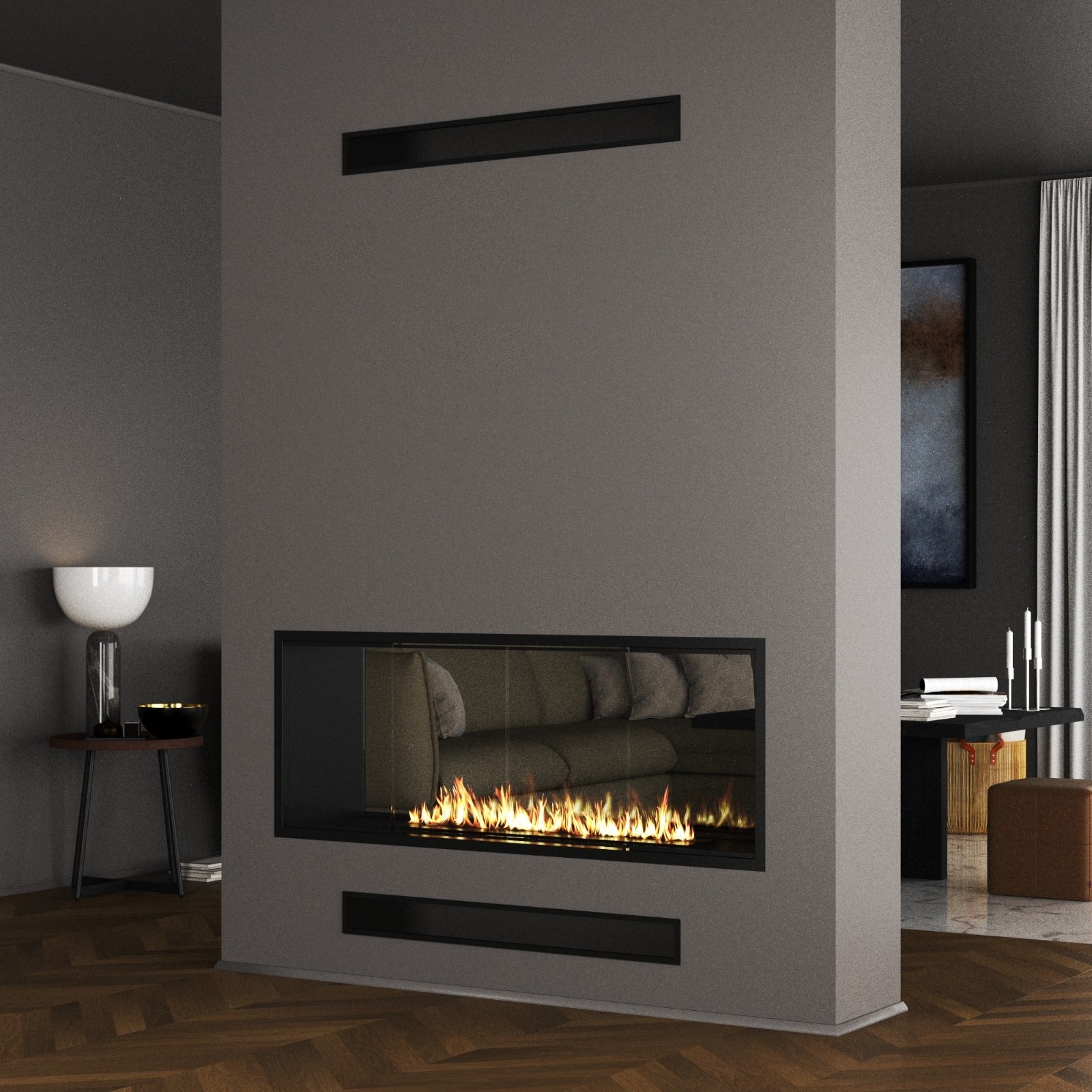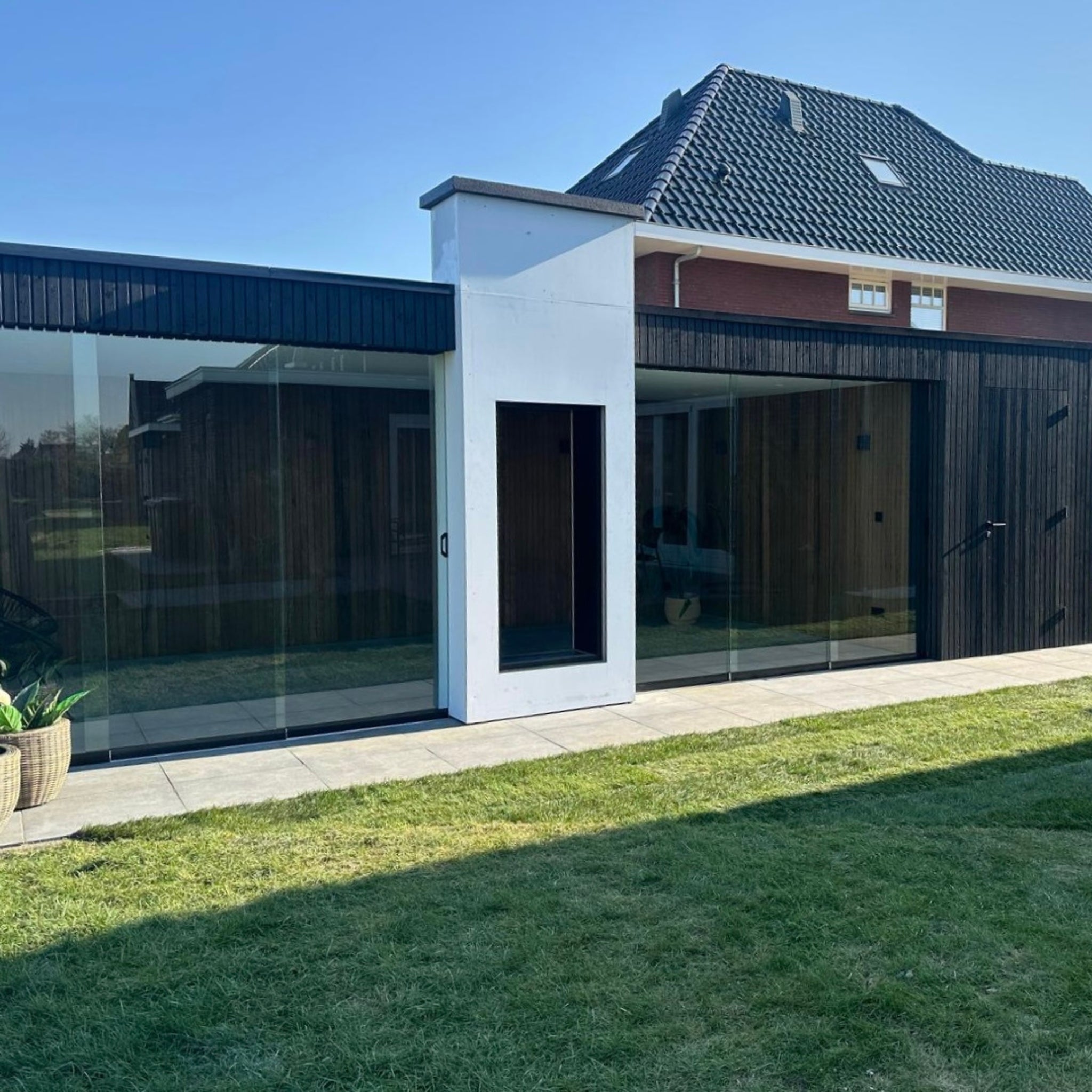Step-by-step plan: What is the best way to install a bio-ethanol burner? All the information you need at a glance
Installing your own bio-ethanol burner may sound complicated, but it is certainly not if you have the right information and knowledge. In this article we will explain to you how best to install a bio-ethanol burner and what to pay attention to during installation.
Please note: before you start installing your bio-ethanol fireplace, you must ensure that you have the correct information. It is important that you choose the right burner that is suitable for your installation. Not all burners are suitable for installation under a TV or in a cupboard, for example. The burner may also differ when installed in a freestanding portable fireplace. Always seek advice from bioethanolhaarden.com first, so that you are sure that you have the right burner. Before you start, read through all the steps below carefully. If you have any questions, you can always contact us.
Step 1 when installing a bio-ethanol burner
The installation starts by making two different frames for your burner. The first frame you need to make is a frame where your bio burner fits or can be used. In the photo (image 1) below you see a frame in which a bio burner has been placed.

The second frame you need to build is the so-called support frame. When making a support frame it is very important that the burner does not float. The burner must always be supported on something. In addition, the burner must fit into the frame to the millimeter. There should be no space between the frame and the burner. You can choose whether you place the burner in the middle of your frame or more at the front. We advise you to place the burner a little further on the outside of the built-in fireplace, because this way the flames spread better for a better result.
When building the frame, you must take into account at least 10 centimeters of distance on all sides (sides, front and back). If you choose a 120 centimeter frame, you will use a bio-ethanol burner for 100 centimeters.


Step 2 to take into account when installing a bio-ethanol burner (the dimensions)
Make sure you take the height, length and depth into account. We recommend always choosing a minimum height of 50 centimeters . For an even more optimal result, choose a height of 60 centimeters. As mentioned earlier, there must be at least 10 centimeters of space on all sides, as shown in the photo below. You will get the best result at a distance of 20 centimeters (better flame results), but a minimum of 10 centimeters is required.
The minimum depth of the burner is 30 centimeters. However, we advise you to choose 40 centimeters. This also gives you a better result from the final bio-ethanol flames.

Step 3 use heat-resistant materials!
One of the most important parts is that you use heat-resistant materials. This includes heat-resistant plasterboard, blocks and paint. Make sure everything is screwed down carefully and check your own work. After this you can start plastering your frame for a smooth and sleek appearance.
You can seal the sides with heat-resistant sealant (very important). If you use a normal sealant, you will eventually get cracks in your sealant due to the heat.
Finally, it is very important to make a grille at the front or on the sides of the built-in fireplace. The heat must be able to vent outside.

Step 4 the paint
You can choose your own color and paint. It is important that you are sure that you choose a heat-resistant paint for safety reasons. After painting, you must let the paint dry for at least 24 hours before you can install the burner.
Do you have any questions about installing your bio-ethanol burner yourself or the choice of materials? Please let us know by completing the contact form or calling us on 06-15316100

